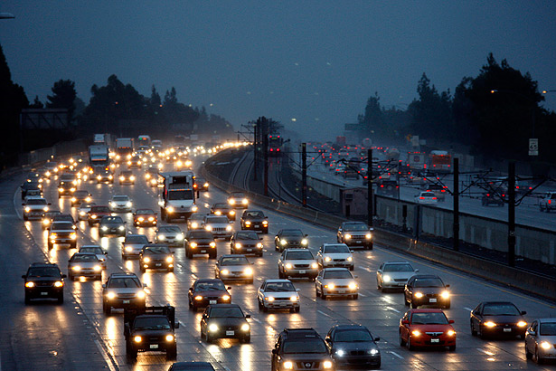SACRAMENTO — Moving around California three decades from now will be safer, cleaner, and simpler with more transportation options under a plan Caltrans unveiled Wednesday.
The California Transportation Plan 2050 details the state’s long-range transportation vision and establishes a roadmap to improve mobility and accessibility in the state while reducing greenhouse gas or GHG emissions related to transportation.
“California’s transportation system connects 40 million residents to jobs, housing, vital services, and recreation,” said Caltrans Director Toks Omishakin. “The plan sets a bold vision to foster economic vitality, protect our environment, and meet the transportation needs of all Californians.”
The CTP 2050 is a comprehensive, ambitious plan that – as opposed to focusing on individual projects or budgets – examines wide-ranging policies and strategies to meet several key objectives, including:
* Expanding economic opportunities through the easy, integrated movement of people, freight, and services
* Creating a low-carbon transportation system that protects public and environmental health
* Advancing transportation equity and improving quality of life for Californians
* Responding to current and emerging trends and challenges, including demographic and economic shifts, land-use changes, and other factors
* Enhancing safety and security on bridges, highways, and roads
* Fostering healthy lifestyles through walking and bicycling paths
* Harnessing potential changes in travel behavior, such as increased use of autonomous vehicles, shared mobility services, and the effects of increased telework, telehealth and distance learning, to reduce our reliance on driving
* Supporting sustainable growth and affordable housing
By 2050, California’s transportation system will need to support an estimated 45 million residents with an integrated, sustainable network of mobility options that provide safe, convenient, and reliable access to jobs, education, healthcare, and other services that improve quality of life in all areas of the state.
California must do this while also achieving its goal of reducing GHG emissions to 80 percent below 1990 emissions levels by 2050.
To make this a reality, Caltrans and local transportation agencies identified eight priorities in the CTP 2050 to guide policy and budget decisions and transportation planning in the years ahead:
* Safety – Provide a safe and secure system designed to eliminate transportation-related fatalities and serious injuries and withstand natural disasters
* Climate – Achieve statewide GHG emission reduction targets and make the state’s transportation system more resilient to climate change
* Equity – Eliminate transportation barriers and expand access across all communities, particularly in low-income neighborhoods and communities of color and for people with disabilities
* Accessibility – Improve mobility across all modes including transit, walking, biking, and vehicle travel so all Californians can safely and easily reach their destination
* Quality of Life and Public Health – Enable vibrant, healthy communities through expanded walking and bicycling paths and convenient transit options to reduce GHG emissions and dependence on driving
* Economy – Support a vibrant, resilient economy by improving freight movement and access to housing and jobs
* Environment – Reduce the negative impacts of transportation by expanding low-carbon and sustainable mobility options
* Infrastructure – Maintain a reliable transportation system that is sustainable and resilient to climate change and natural disasters
During the development of the CTP 2050, roadway congestion was initially reduced in many cities due to COVID-19. However, while the pandemic continues, vehicle traffic has returned to nearly pre-pandemic levels and is likely to worsen, especially if transit service and ridership remain well below pre-pandemic levels.
Expanding access to transit and safe walking and bicycle paths were priorities for Caltrans before the arrival of COVID-19 and remain essential to achieving a sustainable recovery.
The CTP 2050 seeks to advance racial and economic justice by redirecting resources to marginalized and underinvested communities and amplifying voices that have been historically excluded from the transportation decision-making process.
The plan emphasizes the importance of engagement and careful planning to ensure all Californians enjoy the benefits of transportation projects and are not subject to negative project impacts, particularly in historically underserved and underrepresented communities, such as Black and Latino neighborhoods.
Improving engagement in planning at the neighborhood level will limit those communities’ exposure to pollution from the transportation system, provide expanded mobility options, and enhance access to jobs, education, healthy food, and transit.
Visit the California Transportation Plan page to view the report.
Like this:
Like Loading...
Related





 Tweet This
Tweet This Facebook
Facebook Digg This
Digg This Bookmark
Bookmark Stumble
Stumble RSS
RSS


























REAL NAMES ONLY: All posters must use their real individual or business name. This applies equally to Twitter account holders who use a nickname.
0 Comments
You can be the first one to leave a comment.